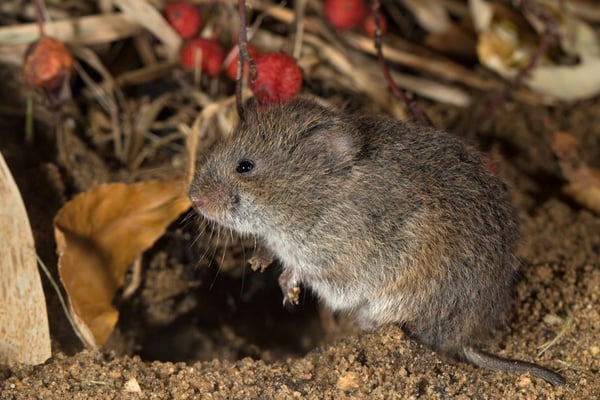Efficient Vole Control Solutions: Handling Vole Pest Issues
Efficient Vole Control Solutions: Handling Vole Pest Issues
Blog Article
Comprehensive Overview to Effective Vole Parasite Control: Infestation Identification and Treatment Methods
In the world of reliable parasite control, vole problems pose a distinct obstacle that requires a calculated approach. These little rodents, typically mistaken for mice, can ruin yards, lawns, and plants if left uncontrolled. Recognizing the indications of vole presence and applying targeted treatment methods are crucial elements of a successful pest management strategy. By exploring the nuances of vole actions, recognizing crucial indicators of infestation, and reviewing a variety of control options, one can develop a thorough strategy to combat these elusive bugs.
Recognizing Vole Habits
Vole habits is characterized by their delving routines and fast recreation rates, making them a challenging bug to regulate efficiently. These tiny rats commonly create complex tunnel systems underground, utilizing them for sanctuary, food storage space, and transport. Voles are herbivores, taking in a range of plants, bulbs, origins, and lawns, which can create significant damage to yards, orchards, and yards. Their fast reproductive rate more makes complex control efforts, with females with the ability of creating multiple clutters in a single year, each consisting of several children.
Comprehending vole habits is crucial for efficient parasite control techniques. By determining their burrow places, keeping track of feeding areas, and applying targeted control techniques, such as trapping or habitat alteration, vole invasions can be managed successfully.
Signs of Vole Invasion

Avoidance Approaches
Executing effective avoidance strategies is crucial in minimizing vole infestations and securing vegetation from their harmful feeding habits. To prevent vole invasions, it is important to begin by eliminating possible food sources and sanctuary.
Frequently evaluating the property for indications of vole task, such as runways and burrow openings, is important for early detection and timely activity. Take into consideration using traps or repellents strategically placed near their pathways if vole activity is thought. Employing natural predators like serpents or owls can additionally aid maintain vole populaces in check. By applying a mix of these avoidance property owners, gardeners and strategies can efficiently secure their vegetation from vole damages.
Non-Lethal Control Methods
To efficiently manage vole populaces while prioritizing gentle approaches, non-lethal control approaches supply practical solutions for decreasing vole damage in landscapes and yards. These obstacles can be buried at the very least 12 inches deep and bent at a 90-degree angle to avoid voles from tunneling below.

Lethal Control Options
One effective approach for resolving vole problems in gardens and landscapes entails the calculated use of lethal control choices. When faced with a serious vole infestation that non-lethal techniques have actually stopped working to have, applying dangerous control measures becomes essential. In general, when utilizing lethal control choices, it is essential to do so properly and in conformity with neighborhood guidelines to efficiently take care of vole problems.
Final Thought
In verdict, reliable vole bug control calls for a thorough understanding of vole habits, identification of indications of infestation, application of prevention strategies, and utilization of both deadly and non-lethal control approaches. Go Here By incorporating these methods, individuals can properly manage vole populations and shield their building from damage. It is essential to deal with vole invasions without delay to stop further problems and decrease the effect on the surrounding setting.
Offered the intricate passage systems and quick reproduction rates particular of voles, recognizing the indicators of vole invasion comes to be important in efficient pest control. One of the key indicators of vole presence is the existence of surface paths or trails in lawn or snow, normally about 1-2 inches broad, developed as voles travel between their burrows and food sources.To successfully take care of vole populaces while focusing on gentle methods, non-lethal control techniques use sensible solutions for minimizing vole damages in gardens and landscapes.One efficient method for resolving vole problems in yards and landscapes entails the strategic use of lethal control alternatives. vole control utah.In conclusion, efficient my sources vole bug control needs an extensive understanding of vole habits, identification of indicators of problem, execution of prevention approaches, and application of both deadly and non-lethal control techniques
Report this page